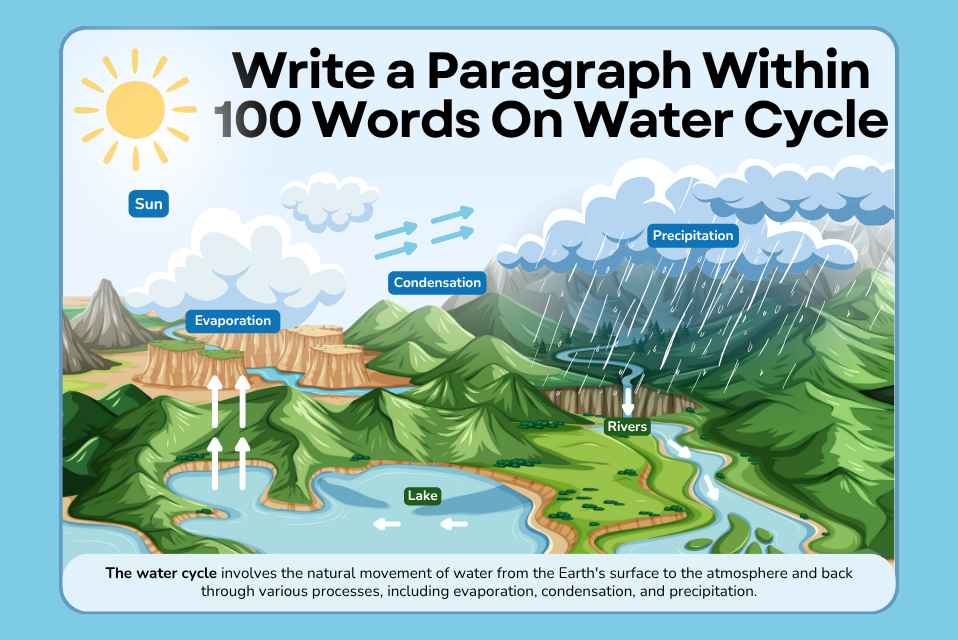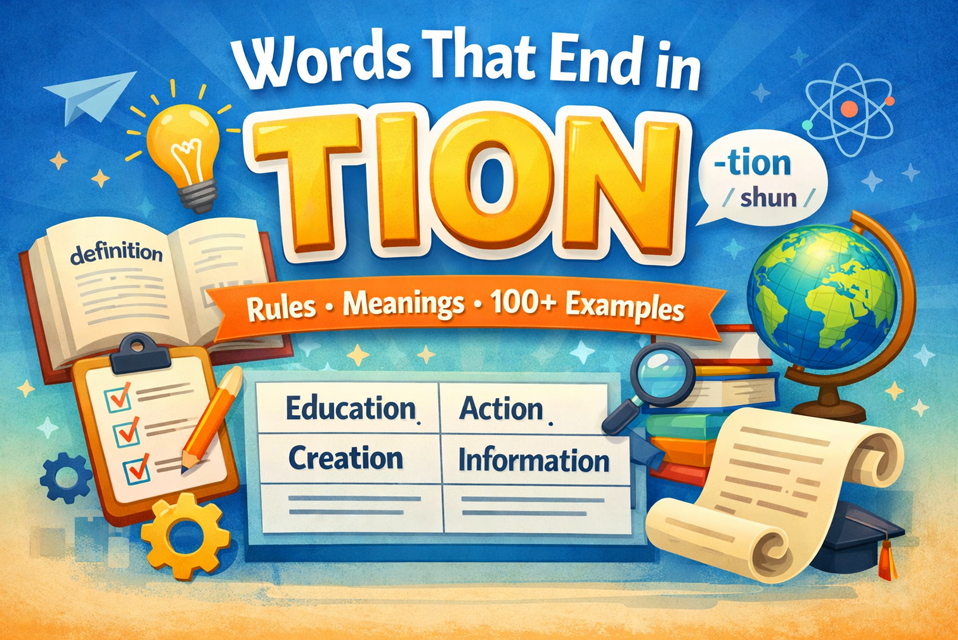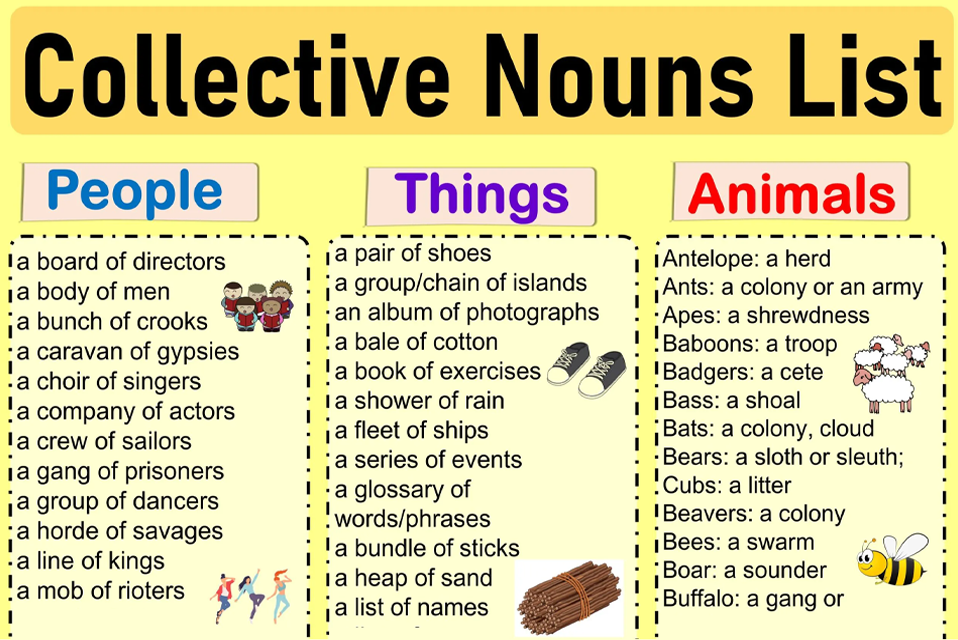The water cycle, also known as the hydrological cycle, is a natural process that ensures the continuous movement of water between the earth, atmosphere, and bodies of water. This process is essential for sustaining life, regulating climate, and maintaining healthy ecosystems. When water collects in rivers, lakes, and oceans, you can see me in water, reflecting the sky and surrounding environment. By understanding the water cycle process, we can better manage freshwater resources, predict weather patterns, and support environmental sustainability.
Paragraph Within 100 Words On Water Cycle: Water covers approximately 71% of the earth’s surface, yet only a small fraction is accessible as freshwater for human consumption, agriculture, and industry. The water cycle explains how water moves naturally through evaporation, condensation, precipitation, and collection. It is the planet’s most important natural recycling system, ensuring that rivers, lakes, oceans, and groundwater remain replenished. Understanding this process is crucial for managing freshwater resources, protecting ecosystems, and supporting environmental sustainability.
Stages of the Water Cycle
Evaporation
The first stage of the water cycle is evaporation, where solar energy heats surface water from oceans, lakes, and rivers, converting it into water vapor. Plants also release water through transpiration, which contributes to atmospheric moisture. This combined process is often referred to as evapotranspiration.
Condensation
As water vapor rises into the cooler atmosphere, it undergoes condensation, forming clouds or fog. Tiny droplets of water cluster together, creating visible formations. Condensation is vital for maintaining atmospheric humidity and preparing water for its return to the surface.
Precipitation
When condensed water droplets become too heavy, they fall to the earth as precipitation in the form of rain, snow, hail, or sleet. This stage replenishes rivers, lakes, and groundwater while supporting plant growth and ecosystems worldwide.
Collection and Runoff
Once precipitation reaches the earth, it either infiltrates the soil to become groundwater or flows across the surface as runoff. Rivers and streams eventually return this water to oceans and lakes, completing the cycle. Collection ensures that water is continually available for human use, agriculture, and natural habitats.
Importance of the Water Cycle
Maintaining Ecosystems
The water cycle sustains forests, wetlands, and grasslands, supporting biodiversity and food chains. Animals and plants rely on consistent water supply, which is maintained through precipitation, groundwater, and surface water.
Climate Regulation
Water movement influences global weather patterns and climate. Evaporation and condensation affect temperature, humidity, and precipitation, which are critical for agriculture and human settlements. Understanding the water cycle aids in predicting droughts, floods, and extreme weather events.
Freshwater Resource Management
Only a fraction of the earth’s water is freshwater, making its conservation crucial. The water cycle process replenishes rivers, lakes, and aquifers, ensuring sustainable access to water for drinking, irrigation, and industry. Proper management of water through understanding the hydrological cycle can prevent scarcity and promote water conservation.
Human Impact on the Water Cycle
Human activities like deforestation, urbanization, and pollution have disrupted the natural water cycle. Reduced evapotranspiration, contaminated water bodies, and increased surface runoff can lead to flooding, water scarcity, and ecosystem degradation. Sustainable practices such as rainwater harvesting, reforestation, and efficient irrigation help restore balance.
The Role of Technology in Studying the Water Cycle
Modern satellite imaging, climate models, and hydrological studies allow scientists to track water movement, predict rainfall patterns, and manage freshwater resources efficiently. Understanding these patterns helps mitigate floods, plan agriculture, and conserve natural resources.
Fun Facts About the Water Cycle
- Water in the atmosphere can stay for only 9 days on average before returning to earth.
- Less than 1% of earth’s water is usable freshwater.
- Evaporation from oceans accounts for around 90% of atmospheric moisture.
- The deep ocean stores more water than all rivers and lakes combined.
Conclusion
The water cycle is a continuous, natural process essential for life, climate regulation, and environmental sustainability. By understanding its stages evaporation, condensation, precipitation, and collection we can better manage freshwater resources, protect ecosystems, and prepare for climate challenges. Promoting water conservation, efficient resource management, and activities like tree plantation helps maintain the balance of the hydrological cycle, ensuring a sustainable environment for future generations.
FAQs: Write a Paragraph Within 100 Words On Water Cycle
Q1: Which four phases make up the water cycle?
Collection, precipitation, condensation, and evaporation.
Q2: What gives the water cycle its name?
Because it repeats in a circular pattern over and again.
Q3: How does the water cycle benefit from the sun?
The heat energy required for evaporation comes from the sun.







